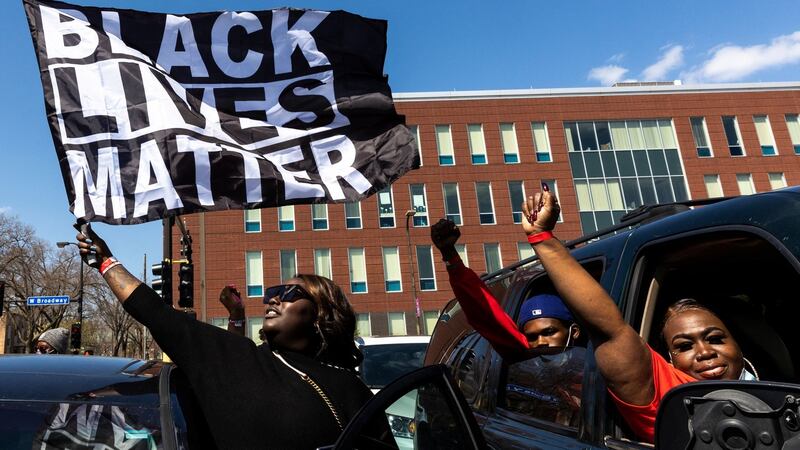"Believe your eyes." It was a strong but direct message. As the prosecution team wrapped up its closing arguments in the trial of Derek Chauvin this week in Minneapolis, they turned to the evidence that lay at the heart of the case: the video footage of George Floyd's death.
After weeks of testimony from 45 witnesses, ultimately the prosecution sought to refocus the attention of the jury back to the evidence that had sparked international protests last year – the scene captured by Darnella Frazier on her smartphone as she walked with her nine-year-old cousin to the local store.
Prosecutors returned to the argument they had made on the opening day of the trial – that the jury should focus on the widely viewed bystander video. "It's exactly what you saw with your eyes ... This wasn't policing. This was murder," said prosecutor Steve Schleicher.

For its part, the defence team argued that the jury should not just consider the nine minutes and 29 seconds of video footage, but what also took place before Floyd’s arrest. This line of argument, as well as the hypothesis that Floyd’s underlying health conditions or drug use contributed to his death, failed to convince the jury.
On Tuesday, after just 10 hours of deliberation, Judge Peter Cahill announced the verdicts in the courtroom: guilty, guilty and guilty.
Chauvin was convicted on all three counts against him, including two charges of murder, and was led out of the courtroom in handcuffs. He is currently imprisoned in solitary confinement, in part for his own protection, and will be sentenced in June.
Jubilant mood
In Minneapolis the mood was one of jubilation but also of quiet relief. Many who had come to the courthouse had not dared to believe that Chauvin would be convicted. Prosecution of police officers for murder while on duty is extremely rare in the United States.
As Minnesota's Democratic governor Tim Walz said after the trial: "If you asked white Minnesotans [what would happen], they thought there would be a conviction; if you asked black Minnesotans, history showed them that there wouldn't be."
The specifics of the Chauvin trial were a case study in how to run a successful prosecution case.
As well as the phone footage, credit should be given to Minnesota's attorney general, Keith Ellison. The former congressman, who himself has faced backlash in his career for his Muslim faith, assembled a stellar team of lawyers to prosecute the case on behalf of the state. A former civil rights lawyer, he had previously represented victims in police brutality cases.
The array of medical and law enforcement witnesses assembled by the prosecution also strengthened its case.
Lisa Christensen, one of the alternate jurors for the trial, said the testimony of Irish pulmonologist Martin Tobin was the "turning point" for her.
“I appreciate him explaining it in the way that all of us could understand it. I understood what he was saying. I thought it was very powerful – probably the most important witness they had,” she said of his evidence.
Enormous challenge
Although the Chauvin verdict was hailed as a moment of justice in the US’s disturbing history of race relations, the scale of the challenge ahead in reforming the criminal justice system is enormous.
The announcement by US attorney general Merrick Garland of an investigation into practices at the Minneapolis Police Department was welcomed by activists. But many are pushing for real changes to the laws governing police conduct at a federal level.
Congress members from both parties are hopeful that momentum from the Chauvin verdict could spur progress on the George Floyd Justice in Policing Act, which would ban chokeholds and other restraint techniques. The proposal to end the "qualified immunity" principle, which protects law enforcement officers from most civil lawsuits, is proving a sticking point, however.
In Minneapolis this week, there was some signs of hope that the city could be turning a corner.
On Tuesday night, after the crowds had drifted away, 16-year-old Clara Kassim and her sister Samira told me why this trial was so important to their generation.
“I think that there is now a real conversation about race in the country,” said Clara. As we spoke, a police car slowed down and the two girls looked around with trepidation.
“Have a good night,” said the police officer, beeping the horn as he drove away with a wave. “You too,” they said, as they headed towards home, their smiles lit up by the street lights.










